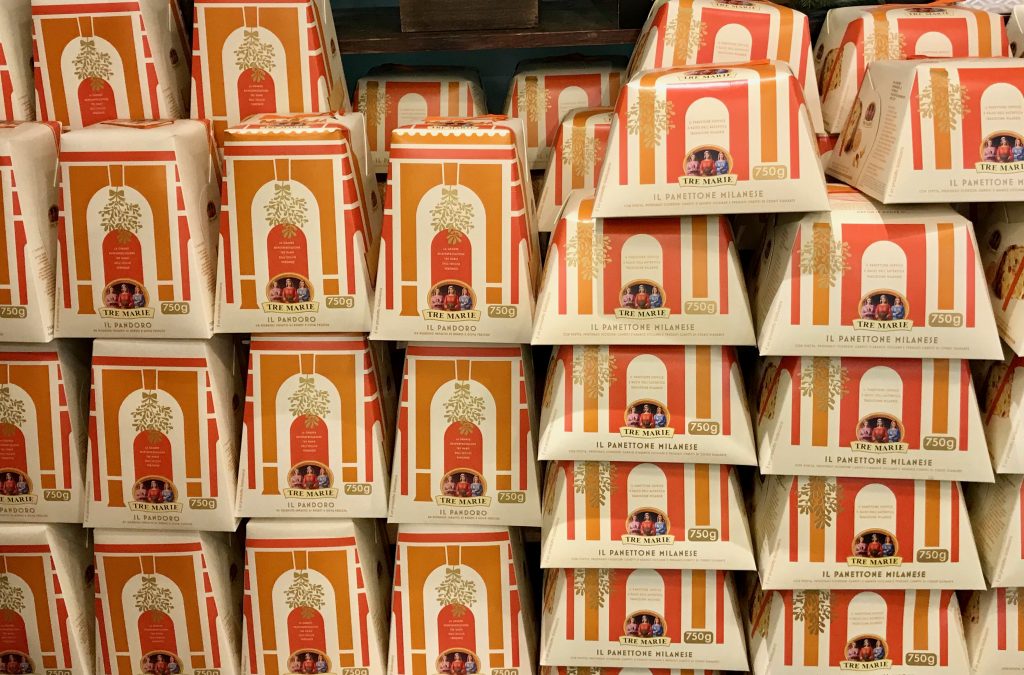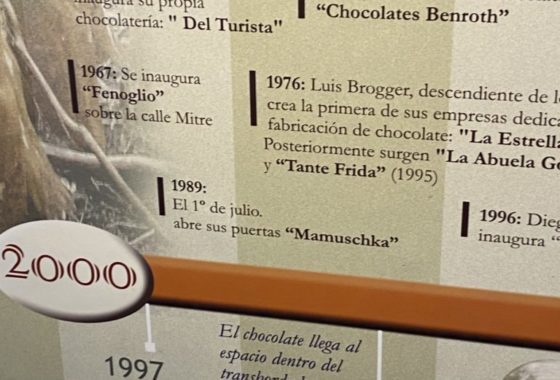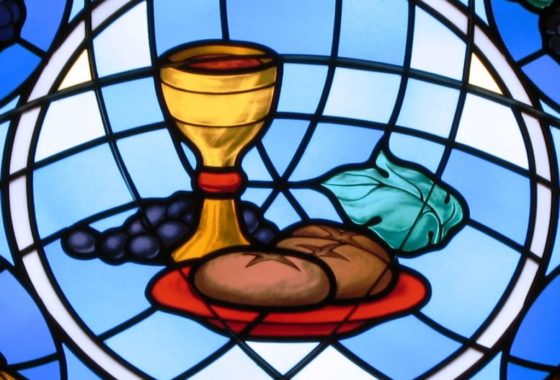
Panettone for Breakfast?
While we tend to think of panettone as a Christmas bread, Jewish food writer Edda Servi Machlin shared this version of panettone from her childhood experiences in Italy of eating it for breakfast. She provides an authentic yet simpler process than most panettone recipes and a very tasty one at that. Enjoy it whenever you want a special treat. Or, for breakfast.
See my story “When Jews Eat Christmas Bread” at The Jewish Week.
Prep time: 45 minutes
Rising time: 4 hours
Baking time: approximately 40 minutes
Yield: 12 slices
adapted from Edda Servi Machlin, Classic Dolci of the Italian Jews: A World of Jewish Desserts
INGREDIENTS
2 envelopes active dry yeast (4 ½ teaspoons)
¾ cup warm water (110º F)
¾ cup sugar
1 teaspoon salt
4 ½ cups all-purpose flour
8 ounces (2 sticks) unsalted butter at room temperature) or substitute olive oil for a pareve version
5 eggs
1 cup seedless dark (preferably Muscat raisins, she writes)
½ cup diced candied citron peel
2 teaspoons vanilla extract
INSTRUCTIONS
1. In a large bowl of a mixer, dissolve 1 envelope of yeast (or 2 ¼ teaspoons) in ½ cup of warm water with 1 tablespoon sugar and 1 teaspoon salt. Add enough flour to make a batter the consistency of sour cream.
2. When the batter begins to bubble, about 10-20 minutes, add the butter and the remaining sugar, beat until very smooth
3. Add the eggs one at a time, beating well after each addition.
4. Dissolve the remaining yeast in ¼ cup warm water with a pinch of sugar and add to the bowl.
5. Add enough flour to make a rather thick batter and set aside for 2 hours or until more than doubled in bulk.
6. Add the raisins, the candied citron peel, and the vanilla extract and mix until all is integrated.
7. Add enough flour to make a very soft dough.
8. Spray the panettone mold with butter spray. Or, grease and line with parchment paper, a 7 inches across x 6 inches tall souffle dish or coffee can, with the edge of the parchment paper extending 2-3 inches above the top of the dish.
9. Transfer the dough to the baking dish, place inside plastic bag, and set aside for 2 hours or until the dough reaches just under the top of the mold.
10. Some people make incisions in the top and place butter. Or, you could use an egg wash on the top.
11. Place in cold oven and set the temperature at 400º F.
12. After 15 minutes lower the temperature to 350º and bake for another hour, or until a skewer comes out clean. Or until it reaches internal temp of approximately 190º.
13. Let cool at room temperature and serve in the paper mold, cutting directly through it. Some people push two skewers through the panettone to turn it upside down in pot or rack or bowl to cool overnight. Store in plastic bag in cool, dry place.
For a pareve, non-dairy version for a meat meal, substitute olive oil for the butter.
- Rabbi’s Remarks:
1. Access some paper panettone molds 7 inches in diameter online.
2. Many panettone recipes require soaking the dried fruits in liquor, preparing a starter a day before the baking, and hanging the baked panettone upside down to keep it from collapsing on itself.
3.Try substituting chocolate, dried ginger, dried blueberries or other favorites. I did and it was delicious.
4. I tried it with whole wheat flour and also with white whole wheat flour. (use half all purpose and 1/2 white whole wheat)
5.I mixed it all with a fork.
6.Accessing citron peel in December is easier than other seasons. I used candied lemon peel.
Recent Posts
-
On the Chocolate Trail in Bariloche, Argentina
In March, Mark and I finally extended our chocolate trail explorations in celebration of our special anniversary to Bariloche…via Miami, Buenos Aires, Ushuaia, Antarctica, and Buenos Aires again. There were international flights, a cruise, a couple of domestic flights to get there. All of the travel was amazing, but Bariloche, sometimes called the chocolate capital
Read more › -
Sunday Yeast Polemics: On the Bread Trail
Leavened bread or not? While some of us may think of Passover, the question applied to Eucharistic bread and created significant division in the early Christian Church. The leavened bread for Sunday use was often baked at home by women. Over time, preferences shifted to clergy, church-produced, breads… and, the Eastern Orthodox Church preferred a
Read more › -
Sweet Treat: Chocolate and the Making of American Jews
You may wonder: how did chocolate help define American Jews? Through chocolate, we see that Jews were part of America since its earliest days. Well, since 1701 at least, Jews in the Colonies made part of their living through chocolate. Several Sephardim, leaders of their New York and Newport Jewish and secular communities, participated in
Read more › -
How About Some Uterus Challah?
When Logan Zinman Gerber felt enraged about the loss of reproductive rights in the U.S., she baked challah. Not any challah. She shaped it into a uterus. It wasn’t long after the birth of her daughter that Gerber, a longtime challah baker and staff member of the Religious Action Center of the Reform movement, considered
Read more ›
Some Previous Posts
(in alphabetical order)
- "Boston Chocolate Party" Q&As with Deborah Kalb
- 2022 Media for The "Boston Chocolate Party"
- A Manhattan synagogue explores the rich, surprising history of Jews and chocolate
- About Rabbi Deborah Prinz
- Baking Prayers into High Holiday Breads
- Boston Chocolate Party
- Digging into Biblical Breads
- Exhibit Opens! Sweet Treat! Chocolate & the Making of American Jews
- For the Easiest Hanukah Doughnuts Ever
- Forthcoming! On the Bread Trail
- Funny Faced Purim Pastries
- Good Riddance Chameitz or, The Polemics of Passover's Leaven
- How About Some Uterus Challah?
- Injera*
- Jewish Heritage Month: Baseball & Chocolate!
- Matzah - But, the Dough Did Rise!
- Plan a Choco-Hanukkah Party: 250th Anniversary Tea Party
- Prayers Into Breads
- To Shape Dough: A Trio of Techniques
Archives
2025
▾- All
2024
▾- January
- February
- March
- May
- July
- All
2023
▾- March
- April
- May
- June
- August
- November
- December
- All
2022
▾- February
- April
- November
- December
- All
2021
▾- March
- April
- October
- November
- All
2020
▾- April
- May
- June
- October
- December
- All
2019
▾- January
- February
- April
- May
- July
- August
- September
- October
- December
- All
2018
▾- February
- March
- April
- May
- July
- September
- October
- November
- December
- All
2017
▾- January
- February
- March
- July
- September
- October
- November
- December
- All
2016
▾- January
- February
- March
- May
- July
- August
- October
- November
- All
2015
▾- January
- February
- March
- May
- June
- July
- September
- November
- All
2014
▾- February
- April
- May
- June
- August
- September
- November
- All
2013
▾- March
- April
- May
- June
- July
- September
- November
- All
2012
▾- January
- February
- March
- April
- September
- October
- November
- December
- All
2011
▾- April
- July
- August
- October
- November
- All
2010
▾- January
- February
- April
- July
- August
- September
- October
- All
2009
▾- January
- June
- July
- August
- October
- All
2008
▾- August
- September
- October
- November
- All
2007
▾- January
- June
- July
- All
2006
▾- November
- December
- All



